Would you buy a home seized by the Criminal Assets Bureau (Cab)? This statutory body targets criminals, seizing houses, cars, cash, handbags and anything else suspected to be the proceeds of crime.
So what type of Cab-seized properties come up for sale? All kinds, says the bureau. From ex-council houses to country homes, apartments, plots of land to mobile homes and industrial premises, you could find any of these on auction websites enlisted to dispose of them. In some instances, properties may have been occupied by an innocent third parties.
First, Cab has to prove that the property is the proceeds of crime. They then apply for an order appointing a receiver to it. Things like whether there is a risk to the property, whether it is insured or whether the property is occupied by an innocent third party are all considered.
If a receiver is appointed, a date and time the occupant must vacate will be specified. This takes into account the particular circumstances of the occupants. The receiver then manages the property, preserving its value until directed by the High Court to sell it. Then it can be placed on the open market.
READ MORE
“Our objective is to deny and deprive, so when we have proven a case and the court says: you can take that house from that person, that is success for us,” says a Cab spokesman. “We sell the house, so we get a value for it and return that to the State.”
Cab sold 12 houses last year, as well as 49 cars and 95 high-value items including watches, according to its figures. Its work returned a total of €7.95 million to the exchequer. Seven residential properties are at an advanced stage of the sale process at the moment with a further seven anticipated to sell this year, it says.
If you feel slightly squeamish about buying a seized house, there are upsides. Your purchase is converting something that has come from the proceeds of crime into a return for the State. And if you want an interesting anecdote about how you came to own your home, that’s hard to top.
Welcome mat
Seized residential properties are sometimes located on the criminal’s home turf, their stronghold where they have an established power base and connections, says Cab.
Rather than use their substantial funds to move to a bigger house in a more upmarket area, some will stay put in a place they know well.
“They are comfortable in that community, that’s where they live, that’s where they grew up and that’s where they conduct their criminal enterprise from, so they don’t want to move out of that area.”
This can mean remaining in a modest house, but spending big on it.
“They have this money and they want to spend it. They want the best house with all the bits and pieces, so it will be kitted out to the last,” says the spokesman. A trophy house can signal their ‘top-dog’ position and wealth.
“They can put an astronomical amount of money into a thing that is totally out of place and not in keeping with all their neighbours. In a way, they are flagging themselves by what they have done to their house.”
Some extensions, conversions and additions to the house may not be in compliance with planning laws. But it’s easy to see why other members of the community may have been disinclined or even afraid to object to works.
Many community members will be happy to see a ‘for sale’ sign go up and for a particular house to change hands.
“The communities know who the criminals are and they know what they are at. They are aware of the people living beside them, or up the road,” says the Cab spokesman. “But they are not going to go knocking on doors.
“There may have been a latent intimidation there. They know who they are living beside, so they are not going to confront them or take them on.
“We get what we call ‘good-citizens reports’ which tell us about people engaged in crime – ‘They are dealing drugs, they have this house…’ so it is brought to our attention and it helps our investigation.” Indeed, Cab received 259 good-citizens reports last year. Of course in other instances the properties may have been occupied by an innocent third parties.
The bureau is overt in communicating its seizures and their sales. If you want to see what properties might be coming up for sale, follow its active X (Twitter) account which has photos with the hashtag #DenyandDeprive.
“When we show it on Twitter, Facebook and Instagram, it’s letting the public know we are working in your area and this is what we’ve done. To see the State, through the Criminal Assets Bureau, coming in and taking those assets, it sends a strong message to the community,” he says. The sale of houses is an important signal to the community, and to the offenders’ networks, that crime is being dealt with.
What can I expect?
Two houses sold at auction on April 25th last are good examples of the Cab-seized properties that come up for sale.
Bidding on 61 Killala Road, a three-bed home in Cabra for sale through Gibson Auctions, was quick and decisive. With a reserve price of €275,000 the successful bidder secured it, against one other party, for €284,000.
Cab seized the house from Christopher Waldron, of Killala Road, after successfully arguing in the High Court that he had bought it using money derived from the sale of drugs.
The funds used to then refurbish the house and build an outsize extension were determined to have derived from his criminal conduct too.
Waldron bought it in 2013 for €50,000, according to court documents. The total cost of the subsequent extension and renovation however was about €431,214, according to a site inspection by a Cab-appointed quantity surveyor.
The spend on refurbishment, which exceeded property values in the area, was unlikely to bring a return on the investment.
The modest-looking exterior of this former council house betrays nothing of the interior, which is finished to a high specification. Pictures reveal a surprising two-storey extension to the rear. It houses a large open-plan kitchen with marble or marble-effect flooring and a generous island. The bathroom has this marbling too, as well as his-and-hers sinks and a large rainfall shower. There is recessed lighting and extensive cabinetry throughout the property.
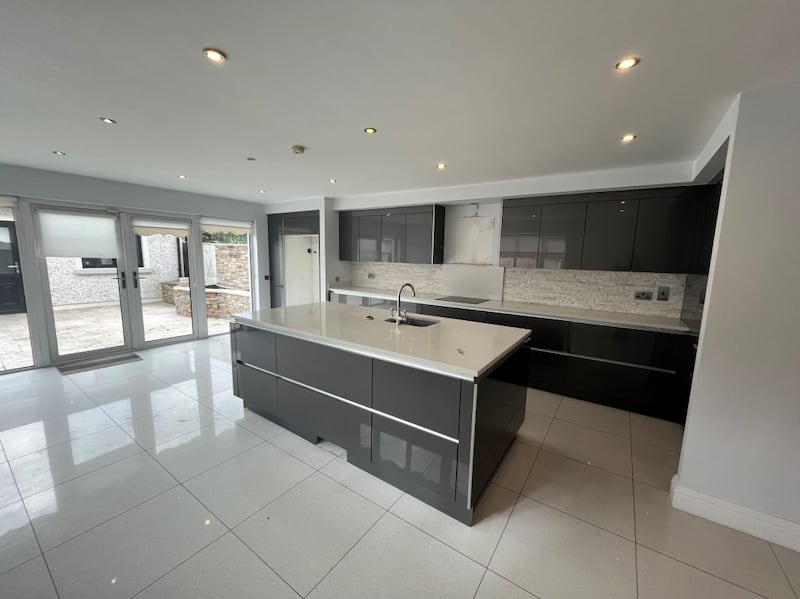
The kitchen is fully glazed to the rear and overlooks another hidden surprise – photos show a separate, high-spec small dwelling, which along with the main house extension all but fills the paved-over garden.
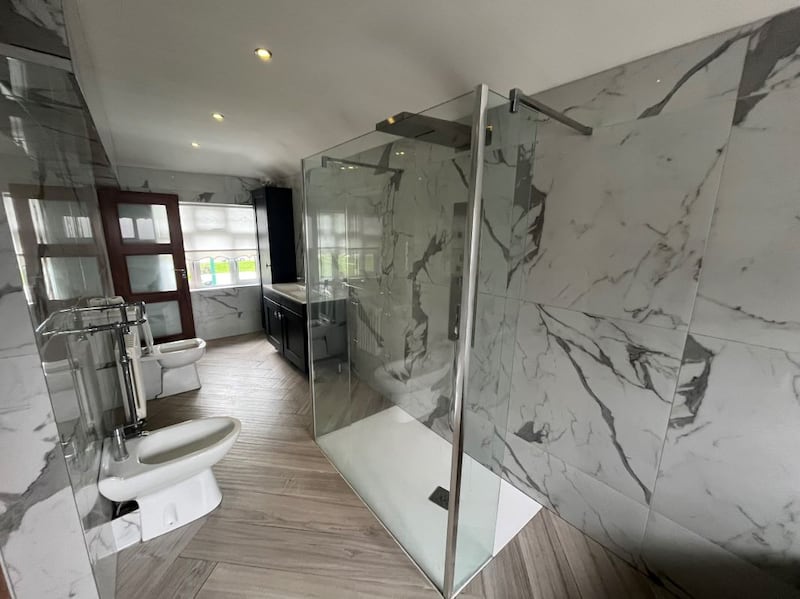
The buyer arguably got good value, considering how much has been spent on the property, and the €284,000 sale price is a big discount on the going rate in the area where properties are marketed for around €375,000. The estate-agent blurb, however, did warn of ‘possible planning issues’ with the property.
Another lot seized by Cab sold at auction in April comprised a two-bed detached cottage, a three-bed house, a large commercial warehouse with lorry-height doors and stables. These were all situated on three acres at Chestnut Lodge on the Naul Road in Garristown, some 18km from Swords.
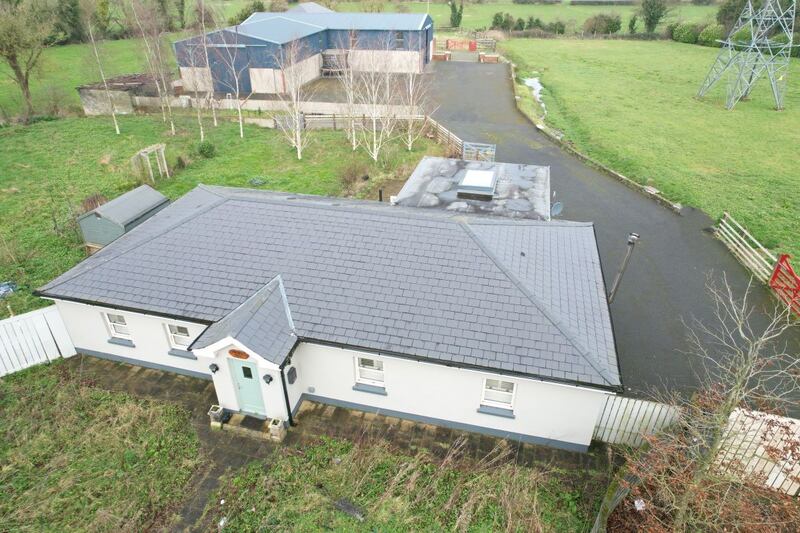
Last year, the High Court ruled that more than €1 million of assets linked to senior Kinahan organised crime gang member Ross Browning were fully or partially acquired, either directly or indirectly, using the proceeds of crime.
The assets included the property at Garristown and several vehicles, luxury watches and jewellery seized there and at addresses in Dublin’s north inner city.
Estate-agent pictures show the cottage has an exceptionally large open-plan kitchen-living area with a big skylight in the kitchen and a vaulted ceiling in the living area.
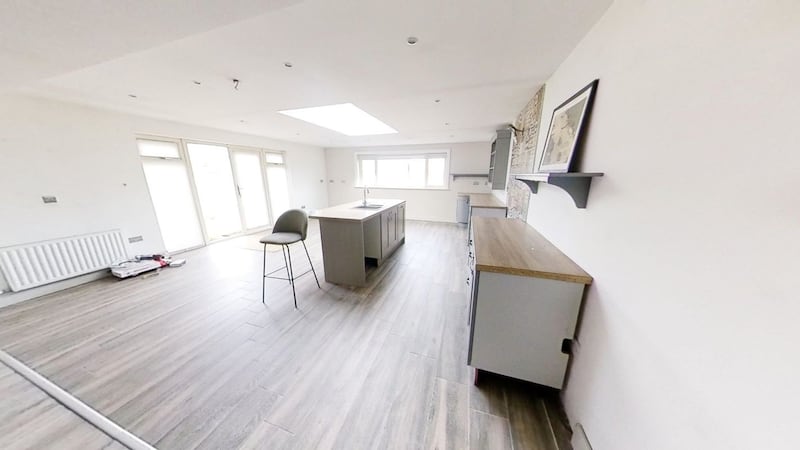
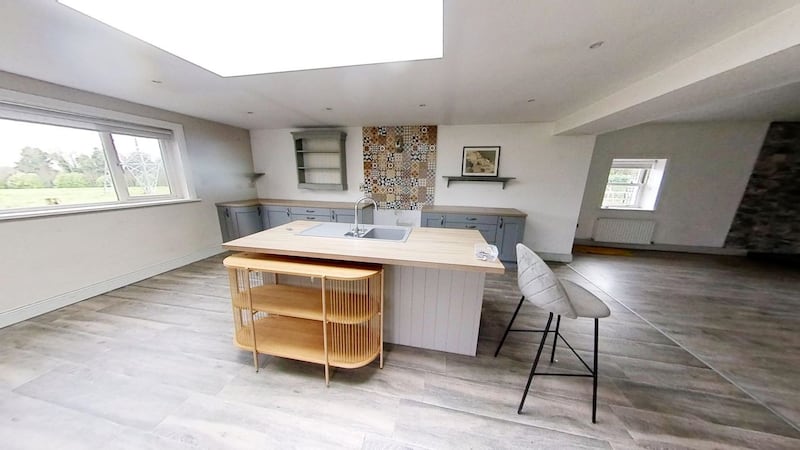
There was just one bidder who secured the substantial property just 7km from Ashbourne, through Gibson Auctions, for the asking price of €550,000.
Another three-bed house at 672 Standhouse Newbridge, billed as “an ideal investment property” sold through Wilsons Auctions on May 22nd. It had an advised minimum value of €150,000 – this is below values in the area. Features included a large tarmacadamed front and back yard, electric security gates and easy access to the M7 and wider motorway network.
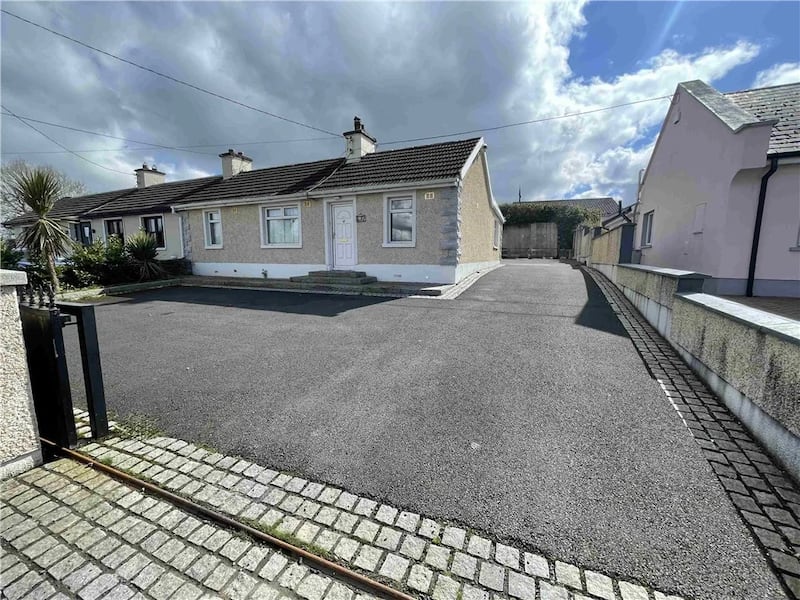
The sale was a result of a Cab investigation targeting various assets of Patrick and Tina Wall (aka Connors) of 1 Drumcairn Park, Fettercairn, Tallaght. The bureau provided evidence that Patrick Wall funded the purchase of the assets through his extensive participation in nationwide burglaries, mostly in rural areas, according to Cab.
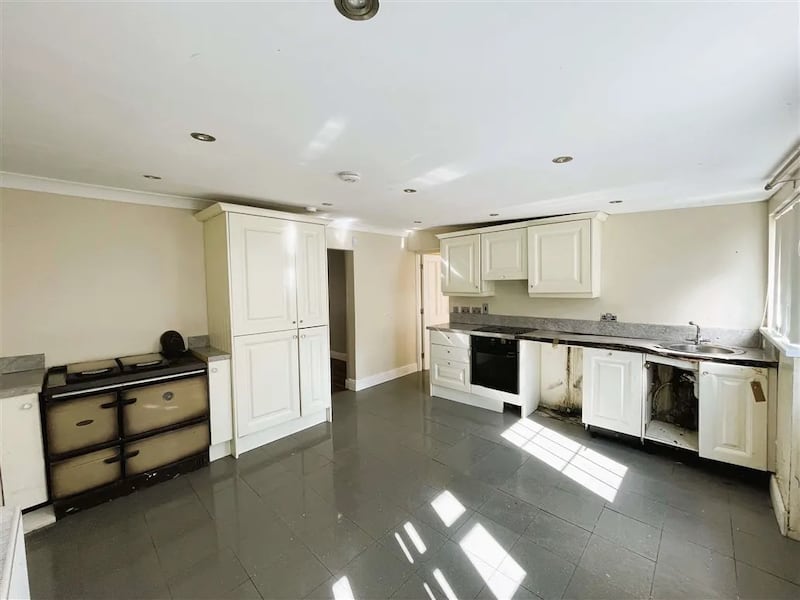
Orders were granted in December last year over assets, including the house at 672 Standhouse Road, a Nissan X-Trail vehicle and cash determined to have derived from the proceeds of Patrick Wall’s criminal conduct.
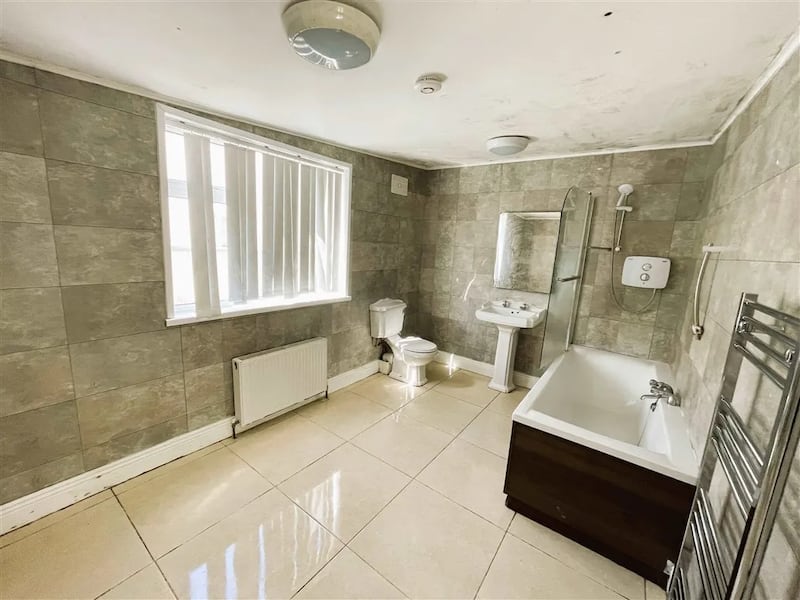
These orders were made with the consent of Patrick Wall and Tina Wall. This may have enabled the speedy sale of the seized items – Cab took possession of this property on March 11th last, and it was sold just over two months later.
Where to look
If you’ve got your eye on a seized property, some come up for sale more quickly than others. Current legislation means it can take at least seven years before something that is suspected to be the proceeds of crime may ultimately be confiscated and sold.
The upshot is there are houses that can hang in limbo. There were some 28 properties on Cab’s books that could be sold but hadn’t yet been sold, Minister for Justice Helen McEntee told the Oireachtas in July last year, though six of these were ‘sale agreed’.
A new Proceeds of Crime (Amendment) Bill will reduce the seven-year wait to two. It will bring new powers which will give Cab the option to immediately appoint a receiver to keep assets beyond the reach of criminals. It will also limit respondents’ ability to reopen the question at the last minute as to whether an item seized is actually the proceeds of crime.
Ms McEntee will bring legislation on the matter before the Oireachtas in the coming months, the Department of Justice said.
When the new law changes come in, house-hunters can expect a possible backlog of Cab properties to hit the market. Any new properties seized may have a ‘for sale’ sign on them more quickly too. If you are comfortable owning a home with a backstory, then keep an eye on the crime reports in the meantime.




















